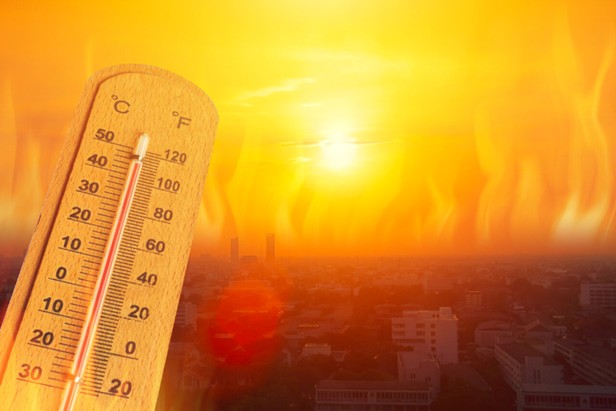How Roof Design Affects HVAC Efficiency
When people think about HVAC efficiency, their minds usually go to the units themselves: thermostats, filters, SEER ratings, or duct design. But what many building owners and facility managers overlook is the role that roof design plays in a structure’s overall energy performance.
In commercial buildings, especially those with flat roofing systems, the roof can either help your HVAC system or work against it. In this blog, we’ll explore how design factors like insulation, reflectivity, and roof color can significantly reduce heating and cooling loads, improve comfort, and lower operating costs.
1. Insulation: The First Line of Defense
Proper roof insulation is one of the biggest factors in controlling indoor temperatures.
How it works:
Commercial flat roofs typically include insulation boards (like polyiso or EPS) installed below the membrane. These materials slow the transfer of heat between the interior and exterior of the building. The better your insulation, the less your HVAC system has to work to maintain set temperatures.
Energy Benefits:
- Reduces unwanted heat loss in winter
- Prevents excessive heat gain in summer
- Improves occupant comfort
- Helps HVAC systems cycle less frequently
Pro Tip: Ensure your roof meets or exceeds local IECC (International Energy Conservation Code) R-value requirements. Etheridge Roofing can help verify this during inspections or re-roofing projects.
2. Reflectivity: Beat the Heat with Cool Roofing

High reflectivity, or a “cool roof”, means the roof surface reflects more sunlight instead of absorbing it. This dramatically lowers rooftop temperatures.
How it helps:
Reflective roofing materials like TPO or white coatings can reduce roof surface temperatures by up to 60°F compared to dark membranes. That cooler roof means less heat is transferred into the building.
Energy Benefits:
- Lowers interior cooling demands in summer
- Reduces HVAC runtime and wear
- Qualifies for LEED or ENERGY STAR® credits
- Can improve rooftop worker safety during summer months
Did You Know? The Cool Roof Rating Council (CRRC) certifies roofing materials based on solar reflectance and thermal emittance.
3. Roof Color: More Than Just an Aesthetic
The color of your commercial roof influences how much solar energy it absorbs.
Color Impact:
- White or light-colored membranes reflect solar rays, keeping roofs cooler Dark-colored roofs (e.g., black EPDM) absorb heat and increase indoor cooling needs
While dark roofs can be beneficial in colder climates by slightly reducing heating demands, most commercial buildings in warm or mixed climates benefit more from light-colored, reflective roofing systems.
Bonus Insight: A lighter roof surface can also extend the life of your HVAC equipment by reducing thermal strain on rooftop units.
4. Cost Savings Over Time

Choosing the right roof system design can lead to substantial savings over the life of your roof.
Example:
- A reflective TPO roof with high R-value insulation can reduce HVAC costs by 10–25% annually, depending on your location and system performance.
- Energy savings often pay back the added cost of premium materials within 3–7 years.
And let’s not forget: a well-insulated, cool roof also qualifies for utility rebates, tax incentives, and green certificationsin many states.
5. How Etheridge Roofing Designs for Efficiency
At Etheridge Roofing, we don’t just install roofs—we help clients make smart design decisions that impact their building performance for years to come.
- We recommend high-performance insulation based on your energy goals and budget
- We install reflective, energy-efficient membranes like TPO and PVC
- We help you stay compliant with state codes and ENERGY STAR® benchmarks
- We support rooftop HVAC protection (curb flashings, walk pads, pipe supports) for long-term durability
Final Thoughts: Don’t Let Your Roof Undercut Your HVAC
If your building is struggling with high energy bills or inconsistent temperatures, it might not be your HVAC system—it could be your roof.
Whether you’re designing a new commercial facility or retrofitting an older one, roof choices matter. Insulation, reflectivity, and color all directly impact how much energy your HVAC system uses—and how much money stays in your pocket.
Contact Etheridge Roofing today for an energy-conscious roof evaluation:
Sources:
- Cool Roof Rating Council (CRRC)
- U.S. Department of Energy – Building Technologies Office
- ENERGY STAR® – Commercial Roof Products Guide
- Johns Manville White Paper: Energy Efficiency and Roof Systems
- National Roofing Contractors Association (NRCA)
Posts by Tag
Recent Posts
Popular Posts
Selecting the appropriate roofing system is...
The connection between the quality of our...
Recent Posts
When faced with Emergency Commercial Roof...
As hurricane season approaches, property managers...







